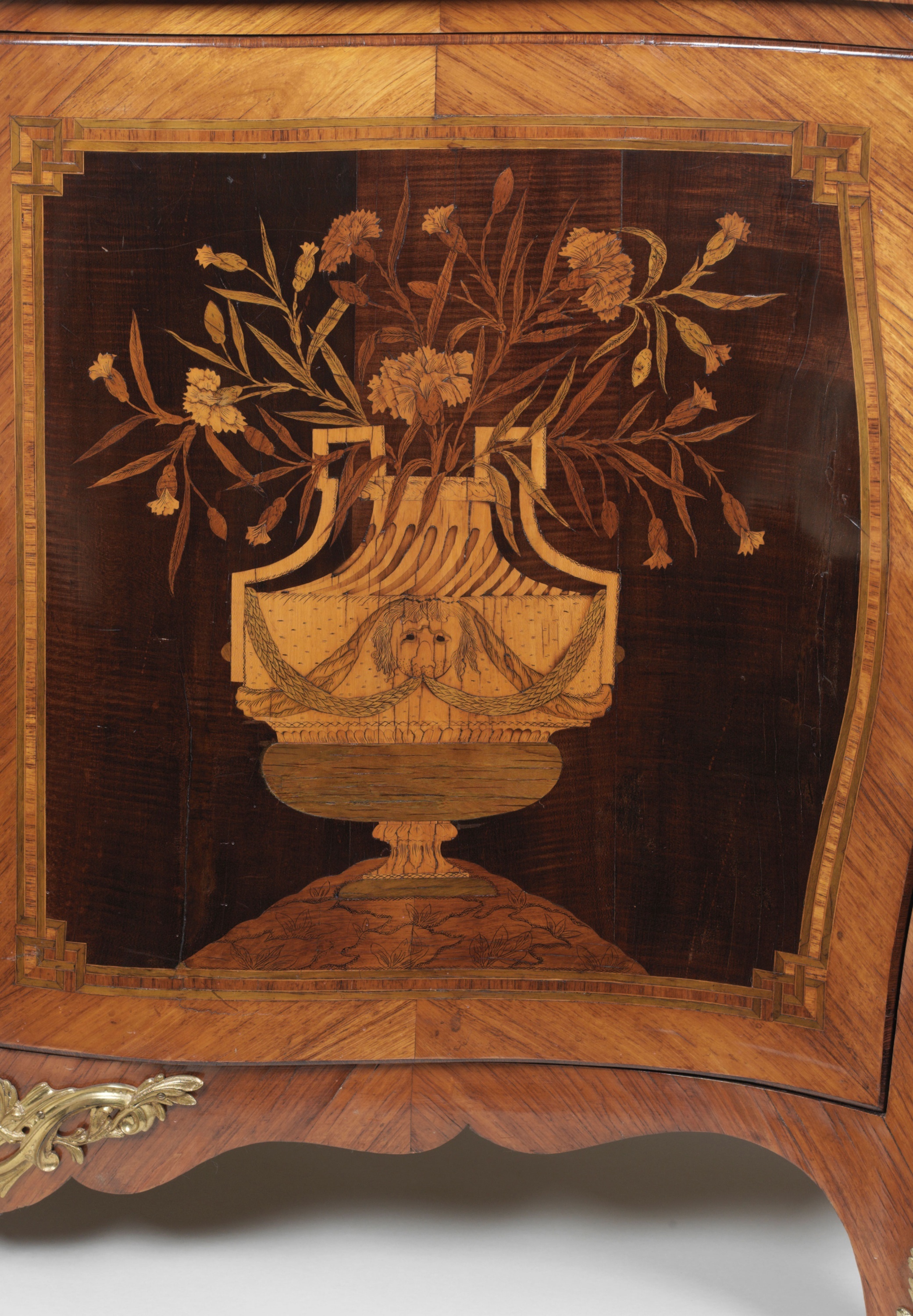

Circa 1765


Possibly supplied to Thomas Edwards-Freeman, Batsford Park, Moreton-in-Marsh, Gloucestershire, and by descent with the house to
John Freeman-Mitford, 1st Baron Redesdale (1748-1830), and by descent to his son
John Thomas Freeman-Mitford, 1st Earl Redesdale (1805-1886), Batsford Park, Gloucestershire and thence by descent
Sale, Bruton Knowles & Co., Gloucester, 30 April to 2 May, 1919, lot 387
Bought by William Hesketh Lever, 1st Viscount Leverhulme (d.1925) from M.Harris and sons 26 May 1919, for £815 and thence by descent.
Lucy Wood, 'Catalogue of Commodes', 1994, p. 165, figs. 152-4 and Appendix X3318, p. 332.
The commode belongs to a small number of commodes, all of which would appear to have been made by a group of continental craftsmen working in England during the 1760s and 1770s. The best known of these émigré craftsmen was Pierre Langlois who had premises in Tottenham Court Road.The designs incorporated in the marquetry, in particular the musical trophy inlaid on the top, are very close to schemes of marquetry found on French pieces. The vases on the doors, in the so-called “goût grec”, relate to engravings of Delafosse which were one of the most important sources for French craftsmen at this period. French pieces. The vases on the doors, in the so-called “goût grec”, relate to engravings of Delafosse which were one of the most important sources for French craftsmen at this period.
| DIMENSIONS | CM | INCHES |
|---|---|---|
| Width: | 149.2 | 59 |
| Depth: | 61 | 24 |
| Height: | 80 | 31 |